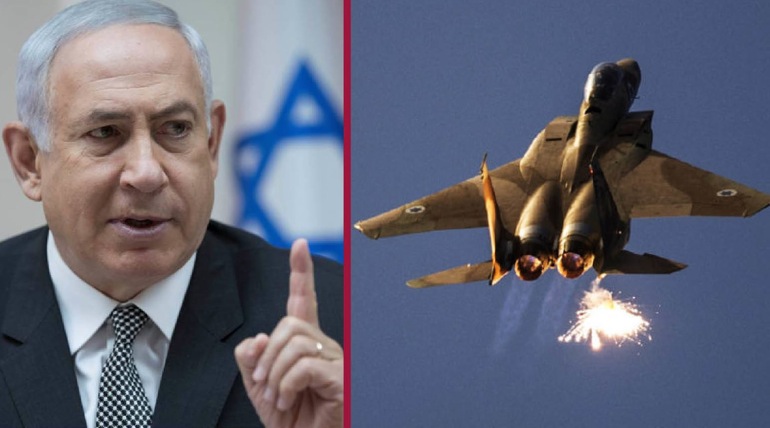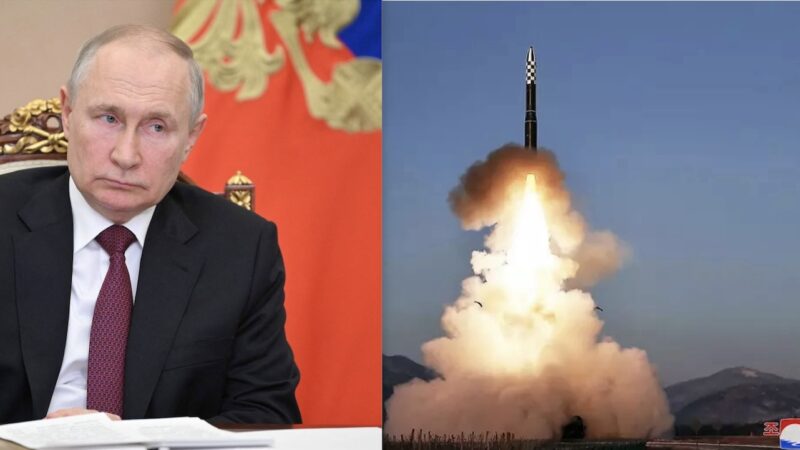Israel continues to violate Syria’s sovereignty, invoking the large military presence of Iranian forces and proxy militias in Syrian territory as an excuse, especially under the rule of the regime’s president “Bashar Al-Assad”. It is worth noting that Israeli strikes started to escalate greatly since 2018, as Israel vowed to block Iran’s entrenchment in Syria and force it out of the region.
According to Syrian Observatory statistics, Israel carried out 79 attacks on Syria between January 2018 and September 2020, destroying nearly 250 targets, including buildings, warehouses, headquarters, centres, posts and vehicles.
The attacks also left some 509 people dead (12 civilians and 497 combatants), and they are as follows:
- 12 civilians, including three women and three children
- 63 regime soldiers
- 35 regime-backed militiamen
- 228 militiamen of the Lebanese Hezbollah and Iranian-backed militias
- 171 members of the Iranian forces and Iranian Revolutionary Guards Corps (IRGC).
2018: Escalation starts
Although the Israeli strikes on Syria started years earlier, they have noticeably escalated since early 2018. The Syrian Observatory documented at least 26 Israeli attacks in 2018, targeting positions of Iranian and regime forces and loyal militias of Syrian and non-Syrian nationalities. These attacks can be categorised according to the targeted provinces as follows:
- Damascus and Rif Dimashq: 12 strikes
- Homs: five strikes
- Al-Quneitra: four strikes
- Aleppo: two strikes
- Deir Ezzor: one strike
- Latakia: one strike
- Tartus: one strike
Israel’s strikes hit positions, weapons warehouses, ammunition depots, headquarters, radar systems and air-defence batteries in the following areas
- (1) Al-Qutayfah, (2) the area of the scientific research center in Jamraya, (3) Al-Dimas, (4) Damascus-Beirut highway, (5) Al-Keswah, (6) Al-Dumayr military airbase, (7) Muadamiyat al-Sham, (8) Jaramanah, (9) the perimeter of Damascus international airport, (10) Deir Al-Ashaayer, (11) Al-Mazzah military airbase, (12) Jabal Al-Mane’, and other areas in Damascus and Rif Dimashq.
- (14) T4 airbase and its outskirts, (15) Al-Bayyarat area, (16) Al-Dab’aa military airbase, (17) Al-Koum area, (18) Al-Baath area, (19) Hudr, (20) Khan Arnabah, and (21) Jaba in Al-Quneitra.
- (22) The 47th Brigade in the southern countryside of Hama.
- (23) “Defence Factories” in Misyaf, and (24) Al-Nayrab military airbase in Aleppo.
- (25) Al-Herri area in Deir Ezzor.
- (26) The outskirts of Banyas city, and (27) the Technical Institution in the outskirts of Latakia.
In 2018, the Syrian Observatory documented the death of at least 179 persons in the Israeli strikes on Syria, mostly of Iranian forces and Iranian-backed militias of Syrian and non-Syrian nationalities.
THE ZIONIST GANGSTER NETANYAHU ATTACKS SYRIA FOR TRIGGING HELL
2019: Escalation continues
In 2019, Israel continued its attacks on positions of Iranian and regime forces and their proxies in Syria, as the Syrian Observatory documented at least 23 attacks which hit the following provinces:
- Damascus and Rif Dimashq: 10 strikes
- Al-Quneitra: seven strikes
- Deir Ezzor: two strikes
- Aleppo: one strikes
- Homs: one strike
- Hama: one strike
- Daraa: one strike
- Al-Suwaidaa: one strike
These strikes hit positions, weapons warehouses, ammunition depots, headquarters, radar systems and air-defence batteries in the following areas:
- (1) Damascus international airport and its perimeter, (2) Al-Keswah, (3) Jamraya, (4) the barren mountains of Qara, (5) the barren mountains of Felita, (6) Sahnaya, (7) Sayeda Zeinab, (8) Al-Mazzah villat, (9) Sa’sa’, (10) Al-Mazzah military airbase, (11) Jadidat Artouz, (12) Qudsiyyah, (13) Beir Saber, and (14) Aqraba in Damascus and Rif Dimashq.
- (15) Al-Tha’la military airbase in Al-Suwaidaa.
- (16) Jbata Al-Khashab, (17) the devastated Al-Quneitra, (18) Al-Koum, (19) Tal Al-Sha’ar, (20) Nabaa Al-Sakhr, and (21) Tal barriqah in Al-Quneitra.
- (22) The area between the Industrial City and Sheikh Najjar in Aleppo
- (23) The school of accountancy, (24) Al-Zawi village, and (25) Talae’ Camp in Misyaf.
- (26) T4 military airbase in Homs.
- (27) Tal Al-Hara in Daraa.
- (28) Al-Herri area, (29) Imam Ali Centre, (30) Al-Hezam Al-Akhdar area, (31) the Industrial area, (32) Al-Abbas village near Al-Bokamal city, (33) the border crossing with Iraq, and other areas in Al-Bokamal in the eastern countryside of Deir Ezzor.
SOHR activists documented the death of at least 157 persons in the Israeli strikes on Syria in 2019, mostly of Iranian forces and Iranian-backed militias of Syrian and non-Syrian nationalities.
Devil-Bibi just confirmed PM in Israel Killed in Syria with Missiles more than Covid-19
Although 2020 still has some four months to conclude, Israel has showed unprecedented determination in the past nine months to counter the Iranian influence and expansion in Syria by dramatically stepping up its operations. Since early 2020, the Syrian Observatory has documented at least 30 attacks which hit the following provinces:
- Deir Ezzor: 11 strikes
- Homs: seven strikes
- Damascus and Rif Dimashq: six strikes
- Daraa: three strikes
- Hama: two strike
- Al-Quneitra: two strike
- Aleppo: one strike
These strikes hit positions, weapons warehouses, ammunition depots, headquarters, radar systems and air-defence batteries in the following areas:
- (1) Al-Keswah, (2) the 75th Brigade nearby Al-Muqaylabiyyah, (3) Damascus international airport and its perimeter, (4) Jadid Yabous on the Syria-Lebanon border, (5) Sahnaya, and (6) the 91st Brigade in Damscus and Rif Dimashq.
- (7) The Agricultural airport in Izraa, (8) Ma’rabaa, (9) Tal Ahmar, (10) Namer Battalion, (11) Qurfa Battlion, and (12) Tal Mahajjah in Daraa.
- (13) T4 military airbase, (14) Al-Dab’aa military airbase, (15) al-Shayrat military airbase, (16) Palmyra desert, (17) Al-Hassan Ibn Al-Haytham camp on the road between Homs and Palmyra, and (18) the road between Al-Sukhnah and Deir Ezzor.
- (19) Kudna, and (20) Al-Qahtaniyah in Al-Quneitra.
- (21) The “Defence Factories” in Sfirah in Aleppo.
- (22) Al-Quriyyah, (23) Al-Saliiyyah, (24) Al-Mayadeen, (25) M’eizileh base, (26) Rahba Citadel, (27) Al-Abbas, (28) Al-Sayyal desert, (29) Al-Thallathat area in Al-Bokamal countryside.
- (30) The “Defence Factories” in Masyaf countryside, and (31) the “onion and potato” factories.
In 2020, the Syrian Observatory documented the death of at least 161 persons in the Israeli strikes on Syria, mostly of Iranian forces and Iranian-backed militias of Syrian and non-Syrian nationalities.
Israeli keeps executing raids and strikes under the pretext that the “Iranian presence in Syria poses a strategic threat to Israel’s national security”, while these attacks also coincide with Israeli-Russian-American consensus on “eliminating” Iranian presence in the region.
Moreover, Russia neither expresses objection to the Israeli attacks on Syrian territory nor intercepts such Israeli attacks and missiles, which clearly indicates to Russia’s tacit willingness to change the balance of power throughout Syria by eliminating Iranian forces and militias, especially in Al-Suwaidaa and Daraa provinces through strengthening the presence of its affiliated “5th Corps”.
Russia also seeks to practice the policy of “interim domination” by taking over the Iranian strongholds in the southern countryside of Aleppo and redeploying its troops in the surrounding areas of Idlib.
In the meantime, the agreement on security and military cooperation between Tehran and Damascus on July 8, 2020 has granted Israel extra excuses to step up its operations in Syria, especially after Iran equipped Syria with advanced weapons and air-defence systems, most prominent of which was “Khordad 3”
The Syrian Observatory for Human Rights is used to hearing the Syrian regime’s empty mantra that it always reserves the right to respond to the Israeli attacks. However, regime forces do not hesitate when it comes to shelling opposition positions or bombarding residential areas inside Syria. The Iranians also dare not launch a large-scale military operation against Israel, as they know well that they will be in a big trouble facing the might of Israel’s military, so the Iranians seem satisfied with letting its proxies do its bidding by firing only a few rockets from time to time on the occupied Syrian Golan, using the Iranian and Hezbollah-backed movement “Syrian Resistance to Liberate Golan”.
At a time when the Syrian regime intercepts and downs Israeli missiles only under a Russian green light, Israel can hit Iranian targets -with the purpose of undermining the Iranian military presence in Syria- only with Russia’s full consent.
On the other hand, Washington justifies Israel’s stance that “Tel Aviv practices its legal rights to defend its security and interests against the Iranian direct threat”, not to mention the US desire to get Syria free of Iranian forces and militias.





From the beginning Israel was active fighting in the war against Assad, Syria whilst denying being involved. Syria is part of BIbí’s greater Israel plan en promised to fulfill. I also found in the beginning that if toppling Assad failed Israel had a plan B to target all infrastruture and destroy the country. First question is how the drought was formed i the North. Was it by HAARP or chemtrailing/geoengineering. Syrian farmers fled to the south and vacated the land, that was then confiscated by Kurds living in and most likely also not in Syria at all. Apparently Israel controls this group. Always curious when a specific group in a country all of a sudden landgrab an entire region and claim it as their own.